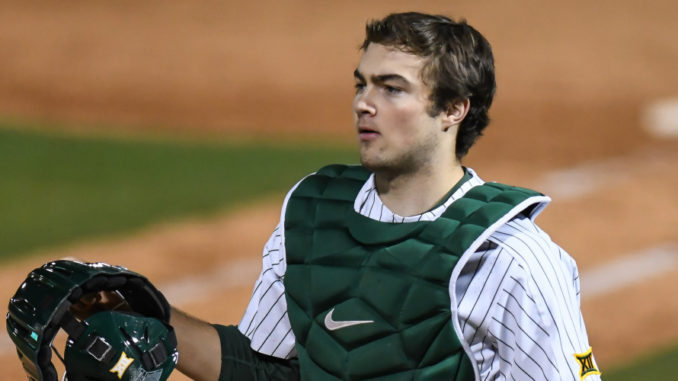
The first two rounds of the MLB draft are in the books, with new Vice President of Scouting Dana Brown running the draft for the Braves in place of the since-departed Brian Bridges, who had monster drafts the last four seasons but failed to sign first round pick Carter Stewart in 2018. Brown has the advantage of two first round picks thanks to a 9th-overall compensation pick for missing out on Stewart, plus the Braves own the 21st-overall pick. Brown also has the advantage of sharing a front office with Assistant GM Mike Fast, who has been an integral part of the Houston Astros drafts of the last six years, drafts that have placed several high-impact players in the major leagues.
Other Entries In This Series:
Day Two (Rounds 3-10)
Day Three (Rounds 11-40)
First Round
Shea Langeliers, C
Age: 21
School: Baylor
Hometown: Keller, TX
The Braves took Baylor junior Shea Langeliers with the 9th-overall pick, widely regarded as the top defensive catcher in the draft with top marks in pitch framing, game-calling, arm, and athleticism behind the plate. Langeliers really caught scouts’ eyes after exploding to a .313/.388/.540 season his freshman year. He slumped in his sophomore season to .252/.351/.496 which damaged his draft stock, and then he missed the early part of this year with a broken hamate bone, an injury that notoriously saps a hitter’s power. Langeliers has proven not to be an exception as he only has 6 home runs (edit: er, 10 home runs including tournament play… see below) this year after getting to double digits his first two years of college.
That said, Langeliers warmed up at the plate down the stretch, and then exploded in an NCAA Regional elimination game on Saturday, setting an NCAA tournament record with 11 RBI against Nebraska Omaha. That game: 2-run homer, solo homer, 2-run single, walk, 3-run double, 3-run homer, strikeout.
The Braves’ Dana Brown indicated that the team feels Langeliers has more power potential than he’s shown to date.
Andy’s Thoughts: The Braves draft a catcher in the first round for the first time since taking Jarrod Saltalamacchia in 2003, but even more importantly Langeliers is the first college hitter taken in the first round by Atlanta in 18 years. This is truly a changing of the guard.
Langeliers was not widely considered the “best player available” by media consensus, but the Braves disregarding media consensus would turn out to be a theme of Day 1 of the draft. Nevertheless, there were many pundits that approved of this pick, with MLB Pipeline’s Jim Callis particularly supportive.
Adding a potential elite-level defender at an up-the-middle defensive position is always interesting, but the key will how the team helps Langeliers unlock his hit tool. Any power he develops could probably be considered icing on the cake. Looking forward, this could be an interesting half of a catching tandem with prospect William Contreras, perhaps as soon as 2021.
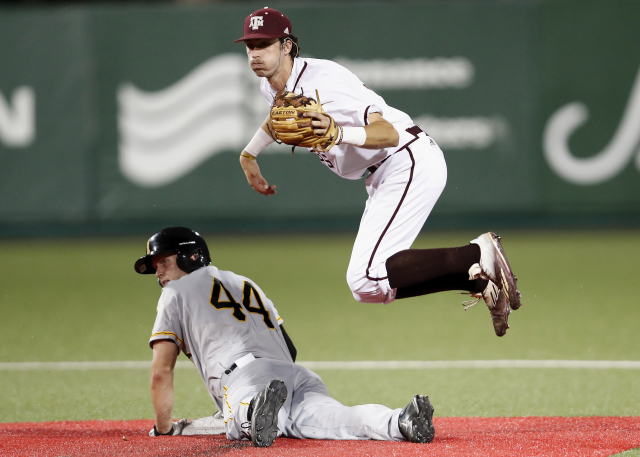
Braden Shewmake, IF
Age: 21
School: Texas A&M
Hometown: Wylie,TX
Shewmake has been a superlative offensive producer in the SEC, the best baseball conference in collegiate sports, hitting .322/.378/.488 for his career. He’s an all-fields hitter with one of the best hit tools in the draft. What’s intriguing about Shewmake is the amount of projection still remaining in his body; he’s listed at 6′-4″, 190 pounds. Braves VP of Scouting Dana Brown has already indicated that the team believes that Shewmake can fill out to add more power to his game.
Defensively, Shewmake has been playing shortstop for Texas A&M, but probably projects to end up at a less-demanding position. Shewmake has good speed and athleticism however, and he has drawn comps to super-utility players like Ben Zobrist. Shewmake also gets high marks on intangibles like leadership.
Andy’s Thoughts: Another sign of a new era: the Braves take two college players in the first round for the first time since 1980.
The Braves have had some success in remaking bodies for power, most recently with Johan Camargo. This is another high-floor pick; if Shewmake only shows moderate development, he should still be a solid major league utility player. If the Braves can help him tap into more power and he maintains his athleticism, his bat could make him a major league regular. This was another over-draft based on media consensus, so the Braves may still be able to float pool money down the draft, but this is also another pick that potentially could help Atlanta within the next couple years.
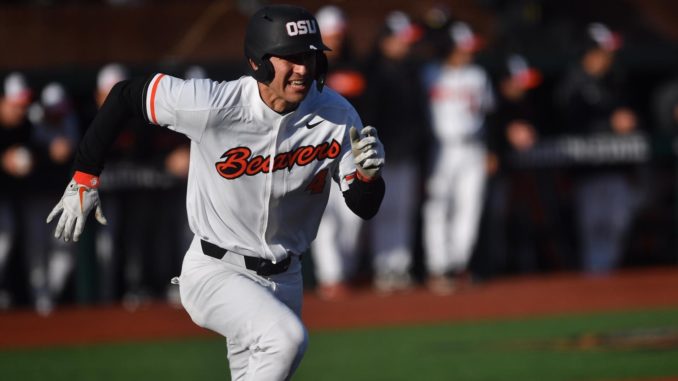
Second Round
Beau Philip, SS
Age: 20
School: Oregon State
Hometown: Sacramento, CA
The 60th-overall pick goes to a big tools shortstop who was not particularly high on many media draft boards due to a nagging hamstring his junior year with Oregon State that caused him to miss three weeks this April after playing his first two years at San Joaquin Delta, a California JUCO.
When healthy, Philip demonstrates a solid hit/speed combination and he was able to slash .313/.362/.475 with Oregon State in 39 games. Philip stole 30 bases his freshman year at San Joaquin Delta, but his hamstring issues held him to only 5 this year. When healthy, Philip should be a strong lead-off candidate, and he had 88 walks in his college career, good for a BB% north of 13%.
Defensively he shows good range and hands and a plus-plus arm at shortstop, so he should be able to stick at the position.
Andy’s Thoughts: Just because he’s a college player, don’t mistake this as another just high-floor selection. Philip is young for a college junior and more than held his own at the plate with one of the top college programs in the country. His hamstring injury couldn’t have come at a worse time for getting noticed by national media, but the Braves apparently saw plenty, drafting him much earlier than media expectations.
This draft has been a shock to the system after so many prep players drafted early from the Brian Bridges era, a strategy that largely succeeded, but it doesn’t stand to reason that this is the “wrong” way to go about the draft. The team has a new model on determining player value, and I’m intrigued to see what it has in store for Day Two.


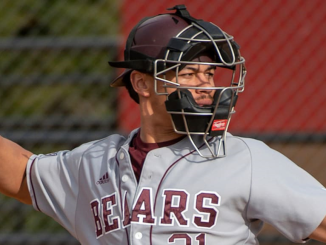
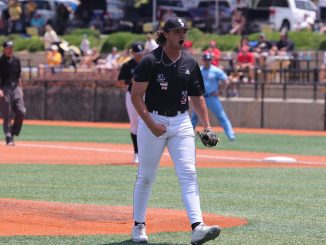
Leave a Reply